Some users complained that their laptops started overheating when they plugged in charging. This can be a serious issue because if overheating is not controlled, it can damage the components of a laptop. According to the reports, the problem of overheating occurs only when users connect their laptops to a charger and turn on the power supply. If your Windows laptop is overheating when charging, the solutions provided here can help you.
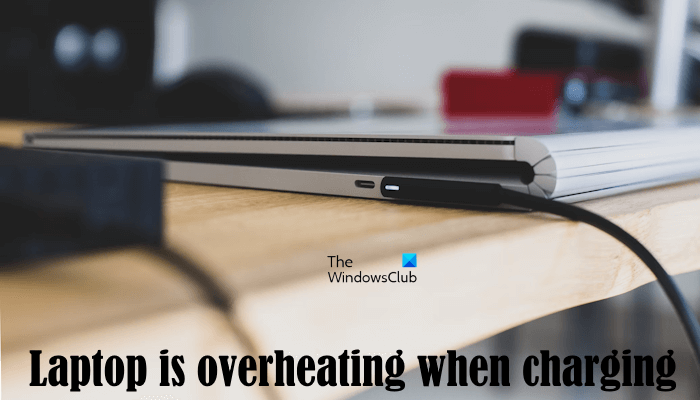
Windows laptop is overheating when charging
If your HP, Dell, Asus, Lenovo, Surface, Acer, Huawei, etc. laptop generates excessive heat and is overheating when charging, take these steps.
- Connect another charger (if available)
- Reset your Power plan
- Change your Power Plan
- Update your device card driver
- Keep an eye on the background programs while charging
- Close unnecessary background processes
- Update your BIOS
- Take your laptop for repair
Below, we have described all these fixes in detail.
1] Connect another charger
The problem may be associated with your laptop charger. If you have another charger of the same model, you can try it. This will let you know whether the problem is with your charger or not.
2] Reset your Power plan
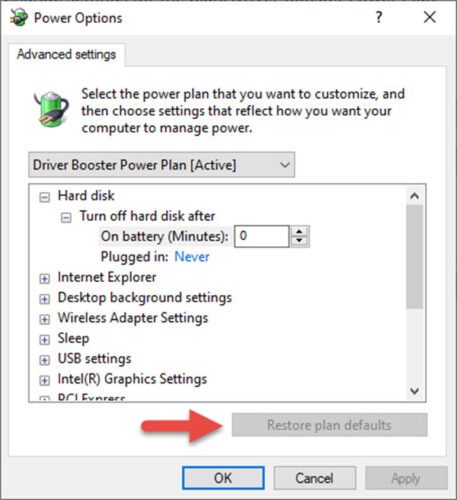
Open Control Panel > All Control Panel Items > Power Options > Edit Plan Settings and restore the default power plan settings by clicking on the Restore plan defaults button for this plan. Do this for all your Power Plans.
3] Change your Power Plan
Because the overheating issue occurs only after you start charging your laptop, changing the Power Plan can fix this problem. You can change your Power Plan via the Control Panel. Apply all power plans one by one and see which one fixes the issue.
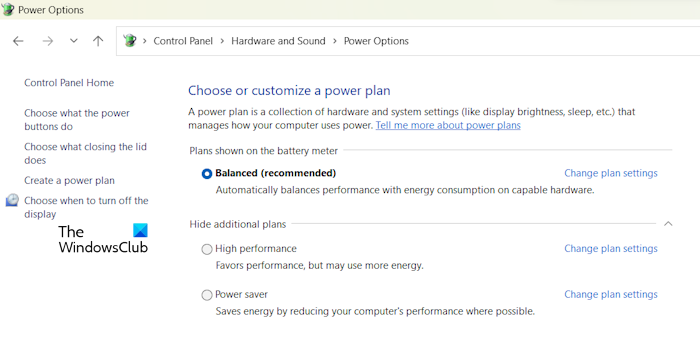
You may find only the Balanced Power Plan in the Control Panel. In such a case, you can restore the missing Power Plans by executing the commands in the elevated Command Prompt.
If your laptop supports the Modern Standby Mode S0, the commands to restore the missing Power Plans will not work until you disable the Modern Standby Mode S0. This mode is enabled by default on the supported laptops. You can check if the Modern Standby Mode S0 is enabled on your system or not by executing the following command in the Command Prompt as an administrator:
powercfg /a
If the Modern Standby Mode S0 is enabled on your system, first, disable it by running the following command in the elevated Command Prompt. After that, you will be able to restore the missing Power Plans.
reg add HKLM\System\CurrentControlSet\Control\Power /v PlatformAoAcOverride /t REG_DWORD /d 0
4] Update your device drivers
Some users found the issue was due to drivers, especially an outdated graphics card driver. You should check if any update for your drivers is available or not. If yes, install the update. You can update your drivers directly from the official website of the manufacturer.
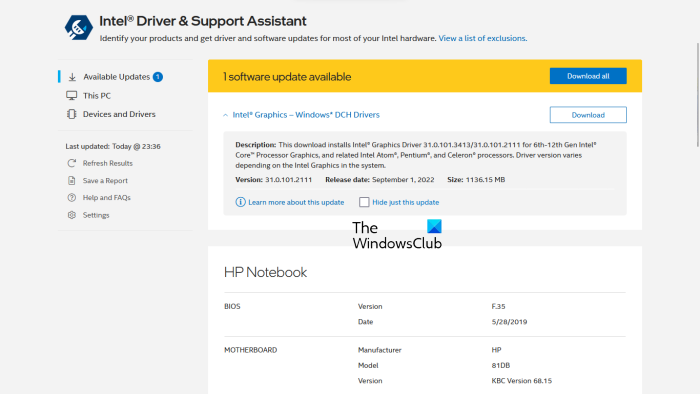
Alternatively, you can also install the dedicated software developed by the manufacturer to update your graphics card driver, like:
- Intel Driver & Support Assistant
- Lenovo System Update
- Dell SupportAssist
- HP Support Assistant
- MyASUS app
5] Keep an eye on the background programs while charging
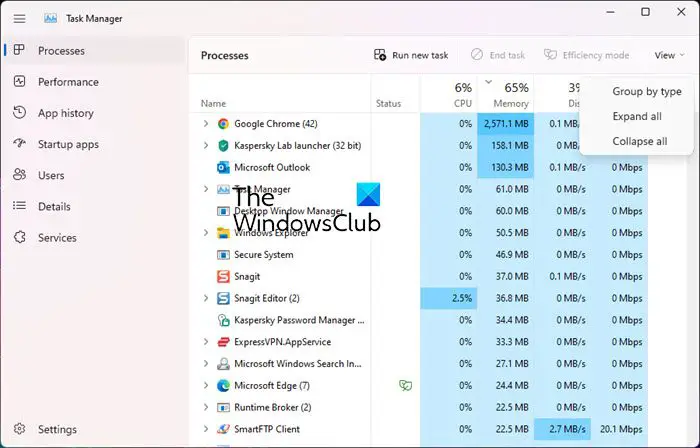
According to some users, an unnecessary program starts automatically every time they charge their laptops. They noticed this strange thing in the Notification Panel. You should also check this. Open the Task Manager and go to the Processes tab. Now, check if any unnecessary process starts automatically when you start charging your laptop. If this happens to you, that program is causing the overheating issue on your laptop. Once you notice a program, you can uninstall it. Before you do so, search on the internet to know whether that program is necessary or not.
6] Close unnecessary background processes
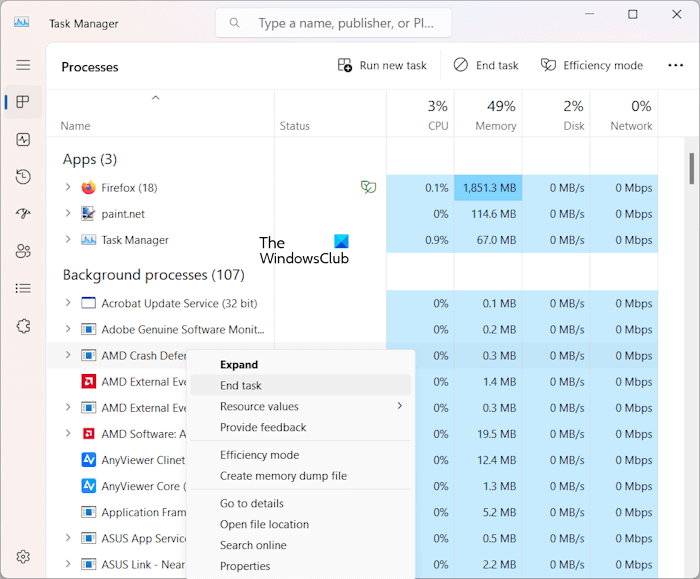
Background processes can also be the cause of this problem. We suggest you close all unnecessary background processes via the Task Manager and see if it helps. You will find them under the Background Processes section in the Processes tab of the Task Manager. To close a background process right-click on it and select End Task.
Close only those background processes that are associated with the third-party applications. Do not close the system background processes, as this can make your system unstable.
7] Update your BIOS
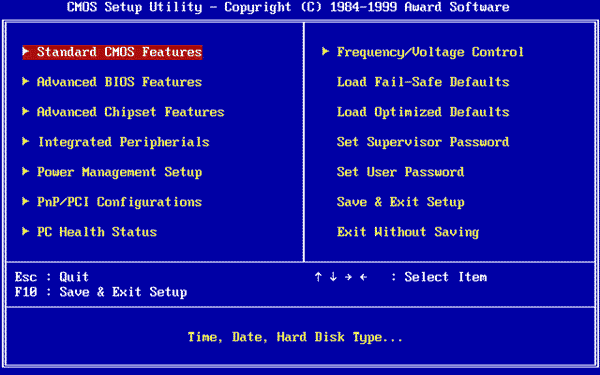
If the problem persists, update your system BIOS. An outdated BIOS version can also cause such types of problems. Hence, updating the BIOS can help.
8] Take your laptop for repair
If despite trying all the above solutions, the problem is not fixed, there might be a hardware issue with your laptop. Or your laptop battery might be faulty. Take your laptop for repair.
That’s it. I hope this helps.
Read: Windows Laptop Battery drains in Sleep Mode.
Why is my laptop overheating while charging?
There can be many causes why your laptop is overheating during charging, like a faulty charger, corrupted or outdated graphics card driver, outdated BIOS version, etc.
Read: Laptop doesn’t start when using battery but starts when plugged in
Does charging increase laptop temperature?
It is normal for a laptop to generate some heat while charging. But if it is getting overheated during charging, this is a matter of concern. Also, if you are doing heavy graphics work, like playing video games while charging, your laptop temperature may go high.
Read next: Laptop battery stuck at 0, 50, 99% charging.